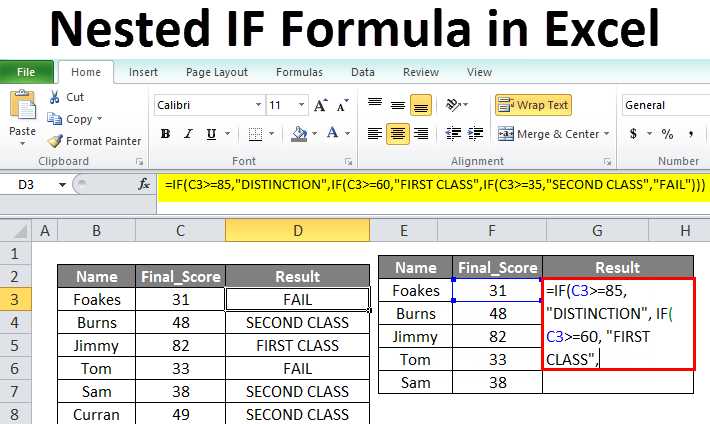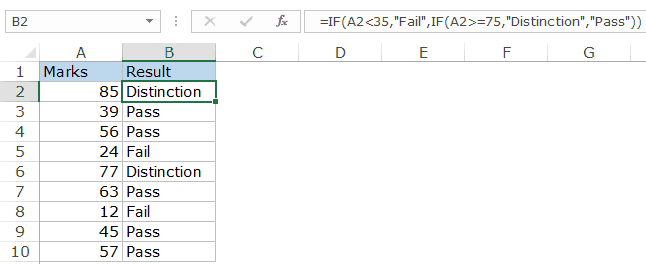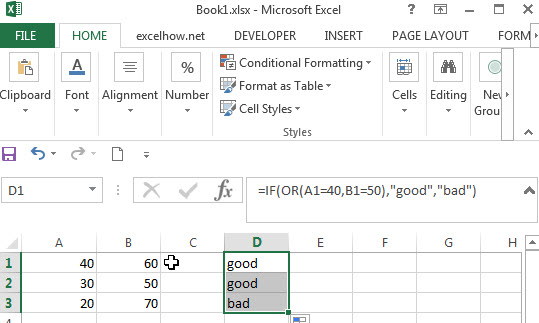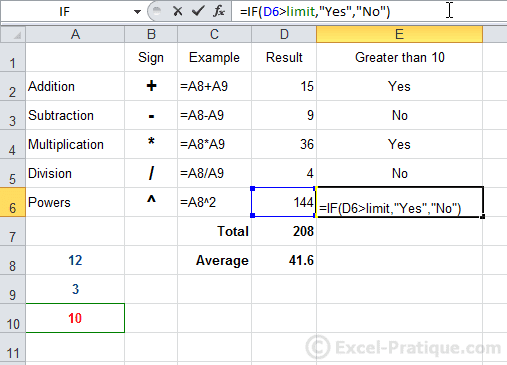The Basic Principles Of Excel If Then Formula
The function informs the spread sheet the kind of formula. If a mathematics feature is being performed, the math formula is surrounded in parentheses. Utilizing the range of cells for a formula. For instance, A 1: A 10 is cells A 1 via A 10. Formulas are created utilizing outright cell referral.

In our initial formula entered into the cell "D 1," we manually get in a =sum formula to add 1 +2 (in cells A 1 and also B 2) to get the total of "3." With the following example, we utilize the emphasize cells A 2 to D 2 and after that as opposed to inputting the formula utilize the formula switch in Excel to immediately create the formula.
Lastly, we by hand get in a times (*) formula making use of amount feature to find the value of 5 * 100. Keep in mind The features noted below might not be the same in all languages of Microsoft Excel. All these instances are done in the English version of Microsoft Excel. Suggestion The examples below are listed in alphabetical order, if you wish to start with one of the most common formula, we suggest beginning with the =SUM formula.

=AVERAGE(X: X) Show the average amount between cells. For example, if you wished to get the standard for cells A 1 to A 30, you would type: =AVERAGE(A 1: A 30). =COUNT(X: X) =COUNTA(X: X) Count the number of cells in a variety that include any message (text as well as numbers, not just numbers) and are not vacant.
The Main Principles Of Excel If Else
If 7 cells were vacant, the number "13" would certainly be returned. =COUNTIF(X: X,"*") Count the cells that have a certain value. For example, if you have =COUNTIF(A 1: A 10,"EXAMINATION") in cell A 11, then any type of cell between A 1 via A 10 that has the word "test" will be counted as one.
As an example, the formula =IF(A 1="","SPACE","NOT BLANK") makes any cell besides A 1 state "SPACE" if A 1 had absolutely nothing within it. If A 1 is not vacant, the other cells will certainly read "NOT SPACE". The IF declaration has extra intricate usages, yet can normally be minimized to the above structure.
For instance, you may be dividing the worths between 2 cells. Nonetheless, if there is absolutely nothing in the cells you would get the =INDIRECT("A"&"2") Returns a recommendation specified by a message string. In the above example, the formula would certainly return the worth of the cell included in A 2.
=TYPICAL(A 1: A 7) Find the typical of the worths of cells A 1 via A 7. As an example, four is the average for 1, 2, 3, 4, 5, 6, 7. =MIN/MAX(X: X) Min and also Max stand for the minimum or maximum quantity in the cells. As an example, if you desired to obtain the minimal value in between cells A 1 and A 30 you would put =MIN(A 1: A 30) or if you wished to get the maximum concerning =MAX(A 1: A 30).
Not known Facts About Excel If Statement
As an example, =Item(A 1: A 30) would certainly numerous all cells with each other, so A 1 * A 2 * A 3, and so on =RAND() Produces a random number above absolutely no however much less than one. For instance, "0.681359187" might be a randomly produced number placed into the cell of the formula. =RANDBETWEEN(1,100) Create an arbitrary number in between 2 values.
=ROUND(X, Y) Round a number to a certain variety of decimal locations. X is the Excel cell consisting of the number to be rounded. Y is the number of decimal locations to round. Below are some instances. =ROUND(A 2,2) Rounds the number in cell A 2 to one decimal location. If the number is 4.7369, the above example would certainly round that number to 4.74.
=ROUND(A 2,0) Rounds the number in cell A 2 to zero decimal areas, or the closest digit. If the number is 4.736, the above instance would round that number to 5. If the number is 4.367, it would certainly round to 4. =AMOUNT(X: X) The most commonly made use of function to add, subtract, multiple, or divide worths in cells.
=SUM(A 1+A 2) Include the cells A 1 as well as A 2. =AMOUNT(A 1: A 5) Include cells A 1 through A 5. =SUM(A 1, A 2, A 5) Adds cells A 1, A 2, and A 5. =AMOUNT(A 2-A 1) Subtract cell A 1 from A 2. =AMOUNT(A 1 * A 2) Multiply cells A 1 as well as A 2.

Excel If Cell Contains Text Things To Know Before You Get This
=SUMIF(X: X,"*"X: X) Do the SUM feature just if there is a specified worth in the first chosen cells. An example of this would certainly be =SUMIF(A 1: A 6,"TEST", B 1: B 6) which just includes the values B 1: B 6 if words "examination" was put someplace in between A 1: A 6. So if you place TEST (not case sensitive) in A 1, however had numbers in B 1 with B 6, it would only add the value in B 1 because TEST is in A 1.

=TODAY() Would print out the present date in the cell gone into. The worth will transform each time you open your spread sheet, to reflect the existing day as well as time. If you intend to enter a day that does not transform, hold back semicolon) to go into the date. =FAD(X: X) To discover the usual value of cell.
=VLOOKUP(X, X: X, X, X) The lookup, hlookup, or vlookup formula enables you to look and also discover relevant values for returned results. See our lookup definition for a full definition and complete information on this formula. .
Each IF feature in an Excel spread sheet returns either messages. The very first-- the "if" message-- shows if cells fulfill requirements that you specify. The 2nd-- the "or else" message-- presents if they do not. For instance, expect that your sheet tracks the hours that each of your workers works.
excel if formula has error if formula excel to compare two columns formula excel if object